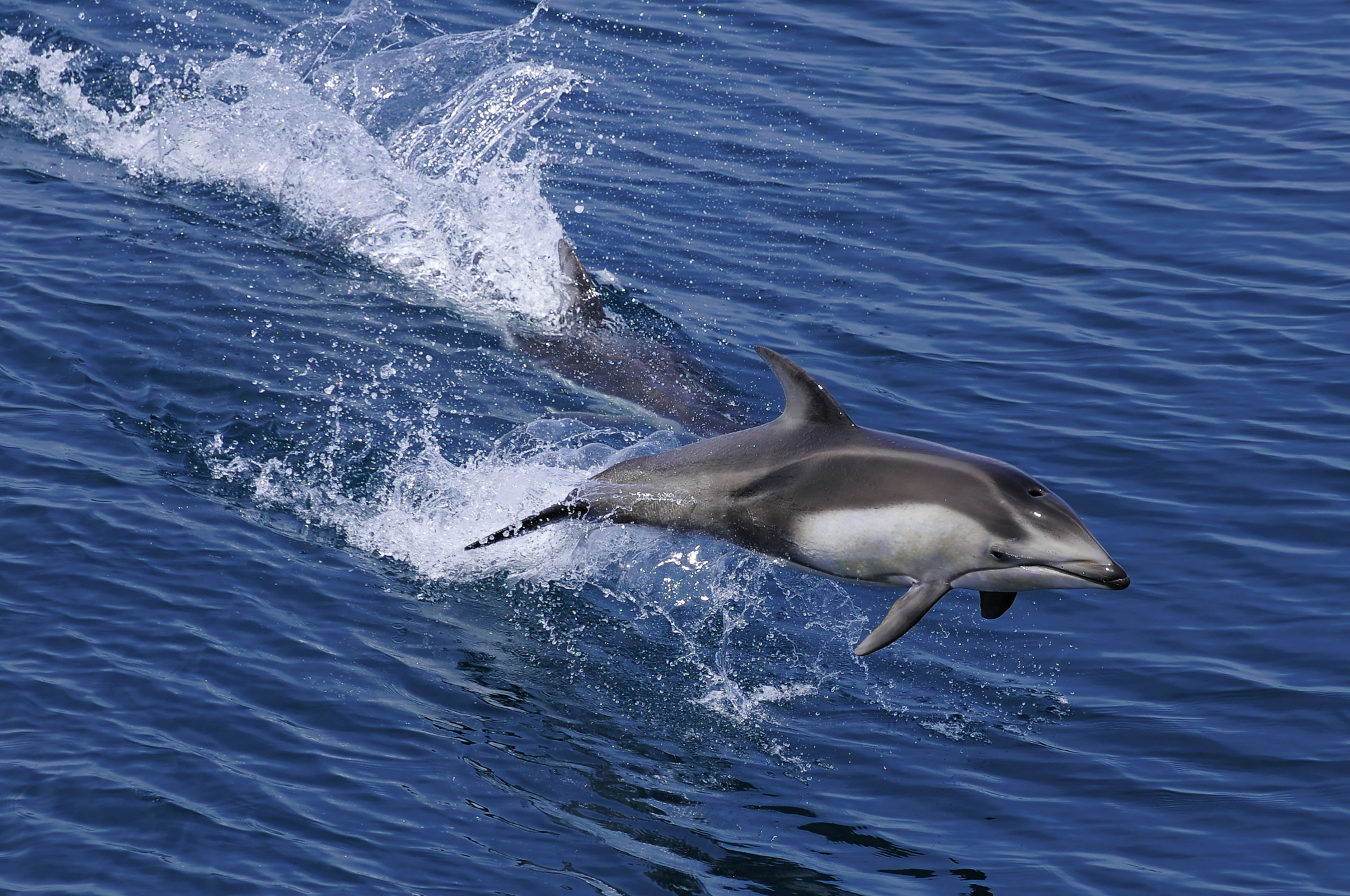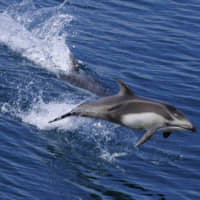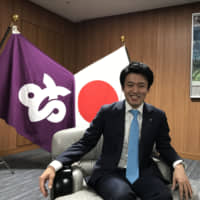Located on the Shimokita Peninsula in Aomori, the northernmost prefecture of Japan's main island, Honshu, the city of Mutsu — with a population of about 57,000 — has been making constant efforts to keep the city attractive for both residents and visitors.
Mutsu Mayor Soichiro Miyashita shared some of the upcoming projects and events to encourage the effective ways of using the existing resources of satoyama and satoumi, which respectively refer to woodlands and coastal areas maintained and cared for by people in rural regions.
On the seafront, dolphin-watching tours will be held from May 9 to June 21. During this time of the year, Pacific white-sided dolphins visit Mutsu Bay.
"The event will provide a perfect opportunity for people to learn more about the dolphins as well as the natural circulation of the nutritious water running into the sea that nurtures small marine species, which will help dolphins and other larger creatures grow," Miyashita said during a recent interview at his office in Mutsu.
A ship for dolphin watching will make two trips a day, departing from the port of Wakinosawa at 9 and 11 a.m. during the event period. Boarding tickets will cost ¥1,830 per adult and ¥910 per child.
On the forest side, an event to help raise awareness of the natural circulation of resources is an annual tree-planting event organized by fishermen engaged in scallop cultivation in Mutsu Bay. The event will focus on planting 250 oak trees as well as beech trees of the same number. In autumn, the fallen leaves of these trees create nutritious mulch. By winter, the snow that melts onto the mulch seeps into underground water veins, which lead to rivers, and eventually to the sea. The tree-planting event will be held on April 23, prior to the dolphin-watching excursion.
Students of neighboring elementary schools will also participate in the event.
"It is important that we enlighten children so that these activities will continue across generations," Miyashita said.
Another annual event that focuses on youth participation and supports children learning about their hometown's values is held at Shimokita Geopark. Named Shimokita Geopark Gakushu Katsudo Happyoukai, which literally means "Shimokita Geopark educational activities presentation," at the event, local students from elementary to high school, as well as other local groups, give presentations about educational activities involving the town's nature and industries through various learning activities. The city funds about eight to 10 activities among them in a bid to raise awareness for regional promotion and utilization of natural resources.
Aside from the younger generation, the city plans to kick off a new collaboration in May with students of the National University of Singapore.
"Japan lacks the concepts of lean startups and early adopters. Singapore does not have the kind of natural resources and environment that satoyama and satoumi offer us. We can make up for what we each lack to create a greater power," Miyashita said.
He expects the city's new values to be found through the fresh perspective of the students. "Through research and hands-on experience in Mutsu, students will develop business models illustrating how to showcase, market and promote our local resources such as marine products," Miyashita said.
He also pointed out another benefit this collaboration may bring to the region. "There are no universities in Mutsu. So it is a whole new experience for the local residents to have a community of university students here," Miyashita said. "I hope there will also be a creation of new values through the exchanges of cultures and lifestyles among the visiting students and locals."
On Oct. 2, the Japan Night View Summit is to be held in Mutsu, where the nightscape seen from Mount Kamafuse is famous for its fascinating shape. "It looks exactly like a swallowtail butterfly. The natural borders of forests and the coastline have contributed to the creation of this unique night view," he said.
The night view of the city and the flourishing nature of the sea and mountains will welcome the participants of the event as well as tourists.
Mutsu also plans to host a two-day event on topics related to satoyama in October. The Japan Times will co-organize the event, which will consist of symposiums and seminars as well as tours to various sites in Mutsu, where local residents make effective use of natural resources.
This series introduces municipalities and local companies promoting the beauty and excellence of deep Japan.




















With your current subscription plan you can comment on stories. However, before writing your first comment, please create a display name in the Profile section of your subscriber account page.